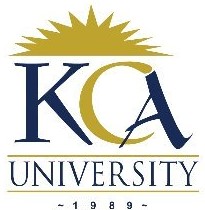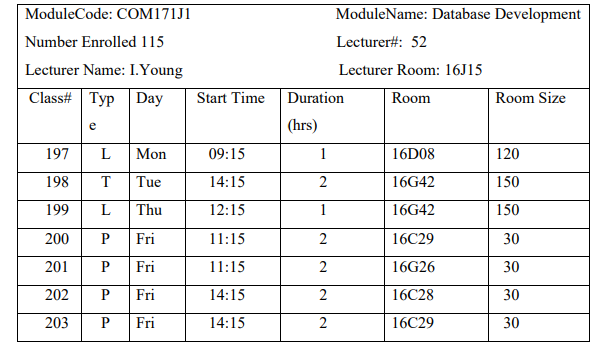 UNIVERSITY EXAMINATIONS: 2011/2012
UNIVERSITY EXAMINATIONS: 2011/2012
EXAMINATION FOR THE BACHELOR OF SCIENCE IN
INFORMATION TECHNOLOGY
BIT 2104 DATABASE DESIGN & DEVELOPMENT
DATE: AUGUST, 2013 TIME: 2 HOURS
INSTRUCTIONS: Answer Question ONE and any other TWO
QUESTION ONE
a) What factors can be used to measure efficiency? [6 marks]
b) Discuss the important role played by users in the process of database design.
[4 marks]
c) Describe the main phases involved in database design. [6 marks]
d) Describe the characteristics of a table in third normal form (3NF). [2 marks]
f) How do the contents of a users’ requirements specification differ from a systems
specification? [4 marks]
g) Compare and contrast the main tasks carried out by the DA and DBA. [4 marks]
h) Explain the advantages of datamining to an organization. [4 Marks]
QUESTION TWO
a) What are the main activities associated with operational maintenance stage. [4 marks]
b) Explain the purpose of testing the database system. [4 marks]
c) Describe the purpose of the data conversion and loading stage. [4 marks]
d) Describe the potential benefits of developing a prototype database system.
[4 marks]
e) Discuss the two main activities associated with application design. [4 marks]
QUESTION THREE
i) Explain briefly what is meant by database security and database integrity
within a relational database system and highlight the relationship between
them. [5 marks]
ii) Explain briefly the differences between Entity Relationship modelling and
Normalisation. [4 marks]
iii) Give an example of an object hierarchy in the object oriented data model.
[3 marks]
iv) Describe how the following concepts are handled by Object Oriented Databases
and comment on how they are handled in the relational model.
(i) Object identity
(ii) Inheritance
(iii) Encapsulation [6 marks]
v) Explain what is meant cardinality of a relation from the relational model.
[2 marks each]
QUESTION FOUR
A theme park wishes to create a database about its activities. There are a number of areas
in the park with each area having several rides. Each rides has one supervisor who is in
charge of that ride alone (unless he is seconded to a development project for a period of
time). A ride is run by several staff, and staff may run different rides on different days,
although a staff member belongs to only one area. Each ride is maintained by one or
more maintenance staff who may maintain several rides. Area details include Area#
(unique) and Area Name. Ride details include Ride# (unique), Ride Name, Ride Type
and Maximum Capacity. Supervisor details include Supervisor Code (unique), Supervisor
Name, Salary, Phone#. Staff details include Staff# (unique), Staff Name, Grade, Salary
and Date allocated to on a particular day. Maintenance Staff details include Maintenance
Code, Name, Shift, Salary, Time spent maintaining a particular ride.
(a) State the entity types with their identifiers and all details of relationships (name,
degree and relevant membership classes). [10 marks]
(b) Draw an Entity Relationship diagram and use the relational mapping rules to
create a linked relational schema. [7 marks]
(c) Explain what is meant by an optional membership class and give an example.
[3 marks]
QUESTION FIVE
The form below shows a representative form for a University Timetabling database.

Where Class# contains unique values and Type values are L – lecture,
T – tutorial and P – practical.
(a) Represent the above form as an unnormalised relational scheme and apply the rules
of normalisation to normalise up to third normal form (3NF), showing dependency
diagrams to explain relation decomposition at each stage [14 marks]
(b) State the first normal form (1NF), second normal form (2NF) and third normal form
(3NF) rules. [6 marks]
